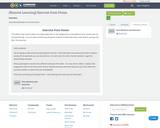
Exercises/Workouts to do from home.

Exercises/Workouts to do from home.
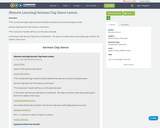
**For remote learning: Students will pick between two dances to practice during the week:German Clap Dance (in this lesson) or Line Dance**For classroom: Teacher will focus on this dance all week.In this lesson, the German Clap Dance is introduced. The steps are broken down and students get a feel for the rhythm of the music.

This Remote Learning Plan was created by Michelle Ulrich in collaboration with Rick Meyer as part of the 2020 ESU-NDE Remote Learning Plan Project. Educators worked with coaches to create Remote Learning Plans as a result of the COVID-19 pandemic.The attached Remote Learning Plan is designed for grades K, 1, 2 math students. Students will practice multiple strategies adding single-digit whole numbers to 10. This Remote Learning Plan addresses the following NDE Standard: MA1.1.3a: Fluently add whole numbers up to 10.It is expected that this Remote Learning Plan will take students 30 minutes to complete.Here is the direct link to the Google Doc:Math Addition to 10

This Remote Learning Plan was created by Michelle Ulrich in collaboration with Rick Meyer as part of the 2020 ESU-NDE Remote Learning Plan Project. Educators worked with coaches to create Remote Learning Plans as a result of the COVID-19 pandemic.The attached Remote Learning Plan is designed for grades K, 1, 2 language arts students. Students will retell the main idea of any informational text. This Remote Learning Plan addresses the following NDE Standard: LA 1.1.6e Retell main idea from informational text.It is expected that this Remote Learning Plan will take students 30 minutes to complete.Here is the direct link to the Google Doc: Main Idea

This Remote Learning Plan was created by Michelle Ulrich in collaboration with Rick Meyer as part of the 2020 ESU-NDE Remote Learning Plan Project. Educators worked with coaches to create Remote Learning Plans as a result of the COVID-19 pandemic.The attached Remote Learning Plan is designed for grades K, 1, 2 social studies students. Students will identify and apply being respectful and kind. This Remote Learning Plan addresses the following NDE Standard: SS 1.1.1.a Explain how rules reduce and help resolve conflicts between people with different perspectives.It is expected that this Remote Learning Plan will take students 30 minutes to complete.Here is the direct link to the Google Doc: RESPECT
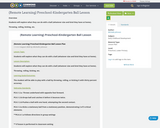
Students will explore what they can do with a ball (whatever size and kind they have at home).Throwing, rolling, kicking, etc.
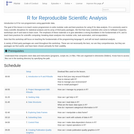
This lesson in part of Software Carpentry workshop and teach novice programmers to write modular code and best practices for using R for data analysis. an introduction to R for non-programmers using gapminder data The goal of this lesson is to teach novice programmers to write modular code and best practices for using R for data analysis. R is commonly used in many scientific disciplines for statistical analysis and its array of third-party packages. We find that many scientists who come to Software Carpentry workshops use R and want to learn more. The emphasis of these materials is to give attendees a strong foundation in the fundamentals of R, and to teach best practices for scientific computing: breaking down analyses into modular units, task automation, and encapsulation. Note that this workshop will focus on teaching the fundamentals of the programming language R, and will not teach statistical analysis. The lesson contains more material than can be taught in a day. The instructor notes page has some suggested lesson plans suitable for a one or half day workshop. A variety of third party packages are used throughout this workshop. These are not necessarily the best, nor are they comprehensive, but they are packages we find useful, and have been chosen primarily for their usability.
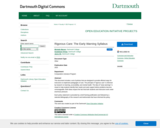
This document includes a set of policies that are designed to provide efficient ways for instructors to implement pedagogies of care. The principle of “rigorous care” is informed by research on learning, accessibility, and mental health. The idea of “early warnings” is meant to help students identify their needs and seek support before problems become unmanageable. Both ideas respect the fact that both students and instructors work under enormous pressure.
Each policy statement is preceded by a brief framing justification and followed by a selected bibliography of the research and testimonials that have informed the policy.
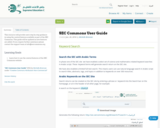
This resource will provide users step by step guidance in using the central features available as part of the SEC Commons. This guide will be updated as new features are added.
If you require further assistance please contact the support team at info@oercommons.org

In this lesson, you will be discussing the different points of view. The points of view we will be focusing on are 1st person, 2nd person, and 3rd person point of view. You will be able to identify the point of view in the given text or video and provide evidence supporting the point of view. StandardsLA 3.1.6.B Identify and describe elements of literary text (e.g. characters, setting, plot, point of view).LA 3.1.6. I Construct and/or answer literal and inferential questions and support answers with specific evidence from the text or addtional sources.
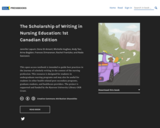
This open access textbook is intended to guide best practices in the journey of scholarly writing in the context of the nursing profession. This resource is designed for students in undergraduate nursing programs and may also be useful for students in other health-related post-secondary programs, graduate students, and healthcare providers.
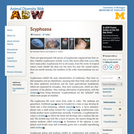
Scyphozoa: Information
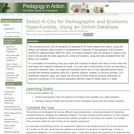
This activity asks students to review the demographic and lifestyle statistics available at ERsys.com, and determine which city or location would provide the best consumer market opportunity for the given problem.
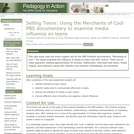
This is a PBS Frontline broadcast support site which examines the role of marketing to teens, and the influence marketing has on teen culture.
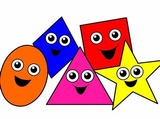
This is a lesson to teach children in pre-kindergarten to recognize and differentiate between shapes. It includes videos, games, and activities that can be done as a group or independently.
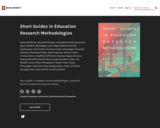
Short Description:
Short guides in common research methodologies, created by doctoral students for doctoral students.
Word Count: 29950
(Note: This resource's metadata has been created automatically by reformatting and/or combining the information that the author initially provided as part of a bulk import process.)
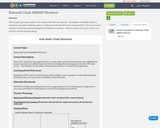
This is a great way to get students to be creative with their own workout. The addition of sidewalk chalk as a material to use makes it different and fun. Students also like that this lesson is done outside. There are so many variations of this that can be developed the possibilities are endless. Would be a great tool if your school is in a virtual or at home learning setting.
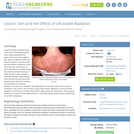
Towards finding a solution to the unit's Grand Challenge Question about using nanoparticles to detect, treat and protect against skin cancer, students continue the research phase in order to answer the next research questions: What is the structure and function of skin? How does UV radiation affect the chemical reactions that go on within the skin? After seeing an ultraviolet-sensitive bead change color and learning how they work, students learn about skin anatomy and the effects of ultraviolet radiation on human skin, pollution's damaging effect on the ozone layer that can lead to increases in skin cancer, the UV index, types of skin cancer, ABCDEs of mole and lesion evaluation, and the sun protection factor (SPF) rating system for sunscreens. This prepares students to conduct the associated activity, in which they design quality-control experiments to test SPF substances.
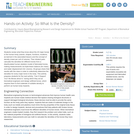
Students review what they know about the 20 major bones in the human body (names, shapes, functions, locations, as learned in the associated lesson) and the concept of density (mass per unit of volume). Then student pairs calculate the densities for different bones from a disarticulated human skeleton model of fabricated bones, making measurements via triple-beam balance (for mass) and water displacement (for volume). All groups share their results with the class in order to collectively determine the densities for every major bone in the body. This activity prepares students for the next activity, "Can It Support You? No Bones about It," during which they act as biomedical engineers and design artificial bones, which requires them to find materials of suitable density to perform as human body implants.
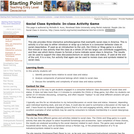
This sites provides three interactive games related to social class and personal possessions indicative of class.